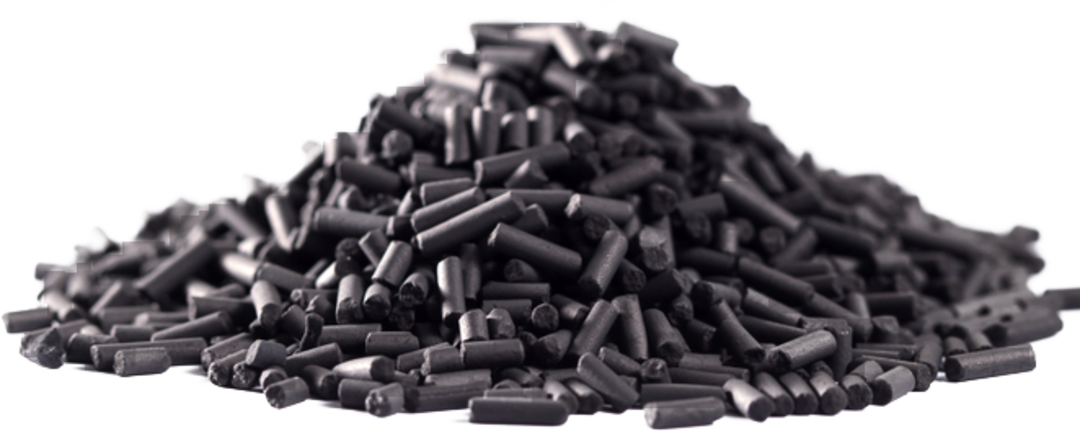
Effect of Activated Carbon on Odors
Activated carbon is an effective adsorbent material frequently preferred in environmental engineering and industrial applications, and stands out as an important component with its superior performance in eliminating odors.
Activated carbon is a processed form of carbon atoms with a high surface area. Generally produced from plant, animal and coal-based substances, activated carbon has high porosity and has the capacity to adsorb molecules on its surface. This feature allows activated carbon to effectively clean odors and harmful gases.
The surface of activated carbon is effective in retaining different gases, vapors and odors thanks to the bonding points of carbon atoms and its microporous structure. Thanks to this feature, the use of activated carbon is widespread, especially in industrial facilities, domestic areas, the health sector and wastewater treatment processes.
Odors are usually composed of volatile organic compounds (VOCs). VOCs are chemical substances found in the air and can be released from different sources. These substances usually have a bad odor and can cause adverse effects on human health. VOCs are produced as a byproduct of many industrial processes and agricultural activities. For example, areas where VOC emissions are common include solvents, pharmaceuticals, cleaning products, food processing, automotive exhaust gases, and the textile industry.
Among the methods used to remove odors, activated carbon is one of the most efficient solutions thanks to the adsorption capacity it provides. In this method, VOCs that cause odors are adsorbed on the surface of the activated carbon and removed from the environment.
The effect of activated carbon in removing odors is basically based on the adsorption mechanism. Adsorption is the process of a molecule adhering to the surface, and the molecules held here accumulate on the surface of the activated carbon. Activated carbon, which has a large surface area with the activation process, attaches to the surface of the substances that cause odors and removes these substances from the environment.
1. Physical Adsorption: This type of adsorption occurs when molecules are physically held on the surface of the activated carbon. Physical adsorption occurs through weak interactions such as Van der Waals forces. Generally, substances with low molecular weight and low boiling point are retained by physical adsorption.
2. Chemical Adsorption: (Covalent Bonds): Chemical adsorption is based on stronger interactions and involves the formation of covalent bonds between the molecule and the activated carbon surface. This type of adsorption usually leads to the adhesion of more complex and stable compounds. Some compounds that cause odors can bind more strongly to the activated carbon surface through chemical reactions.
Activated carbon generally works effectively in removing odors through physical adsorption. Molecules are cleaned from the environment by adhering to the carbon surface and the odor in the air is eliminated. However, some odors may require chemical adsorption, and in this case, it interacts more deeply with the activated carbon surface and achieves a more stable bond.
Activated carbon is used in a wide variety of areas in removing odors. Some areas where activated carbon is effectively used on odors can be listed as follows.
1. Industrial Areas: In industrial facilities, especially in the chemical, textile, food processing and pharmaceutical industries, odors released during production processes can cause problems in terms of both the environment and occupational safety. Activated carbon offers an effective solution for eliminating these odors. Carbon filters absorb VOCs and other harmful gases.
2. Domestic Areas: Bad odors are common in kitchens, toilets and other areas of the home. Activated carbon air purifiers effectively eliminate bad odors by improving the air quality in the home. In addition, the use of activated carbon is also common in the storage and management of household waste.
3. Wastewater Treatment: Activated carbon is used in wastewater treatment plants to remove organic substances and odors. Chemical substances mixed into the water are adsorbed on the surface of the activated carbon, accelerating the purification process and eliminating bad odors.
4. Agriculture and Livestock: In the livestock sector, ammonia and other odors, especially during the management of manure and animal waste, can spread to the environment. The use of activated carbon to eliminate these odors is common. In addition, activated carbon is an effective solution for controlling odors in greenhouse conditions.
5. Air Purification Systems: The use of activated carbon in air purification systems, especially in industrial facilities, is common in air filters. These filters clean harmful gases and odors from the environment and increase the quality of the air.
Although activated carbon is an extremely effective material in removing odors, it has some limitations. In particular, the capacity of carbon filters is limited and becomes saturated after a certain period of time. In this case, the filters need to be replaced or regenerated. In addition, activated carbon only adsorbs substances that cause odors. More specialized filtration methods may be required to remove some odors.
Activated carbon is an extremely effective and widely used adsorbent material in removing odors. It effectively removes organic components at the source of bad odors through physical and chemical adsorption processes. Activated carbon plays an important role in removing odors in many different areas, from industrial facilities to domestic areas, from wastewater treatment systems to agricultural areas. However, the effectiveness of activated carbon can be increased with correct use and periodic maintenance.
İlker KURAN
Alperen Mühendislik Ltd. Şti.







